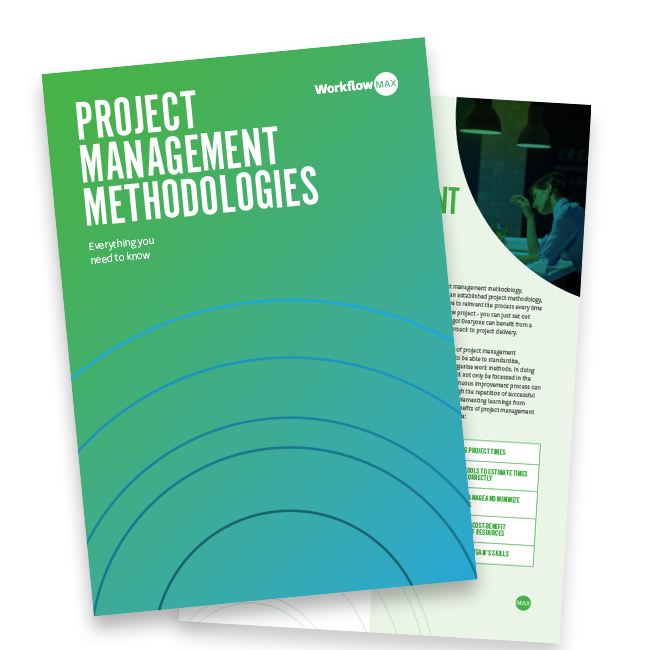Where do project management methodologies stem from?
We talk about project management a lot on the blog, but we tend to focus on the tools needed to make a project a success. Having the right tools is vital, but it’s not the whole story. The way you approach the project and organise your process - ie. the methodology - will have a tremendous impact on a project’s success.
Without a method or approach to follow, projects tend to be managed in an ad hoc, unofficial manner. It’s up to the individual manager to figure out a way to run the project that ensures the desired outcome is met. Historically, for example, large civil engineering projects were managed by the architects or master builders themselves - famous names like Isambard Kingdom Brunel, Christopher Wren and Vitruvius all managed their own epic projects.
It was around the 1950s where companies started developing project management techniques to make managing large engineering and construction projects more streamlined. Many core engineering fields needed to be brought together into one project, so it started to become necessary for one unifying methodology to cover all the different disciplines. Originally, project management as a discipline only applied to these types of engineering projects, but now the methodologies are used across a wide range of industries and teams.
Do I need a project management method?
Perhaps you are new to a project or you think you have a method in place. Consider these scenarios:
- The different roles in my project are not clearly defined
- Different teams in my organisation manage projects in their own way
- Some of our projects are incredibly successful but this is not common for all our projects
- Project teams seem to reinvent the wheel with each new project
- Very little sharing occurring between teams occurs in regard to lessons learnt or consistency or approach
If one or more of these scenarios seems familiar to you, chances are you are in need of clear project management method so you can start reaping the benefits, work more efficiently and avoid these scenarios in your next project.
Where do I start?
There are many project management methodologies available to you, however the most important point to note is that they are not all suitable for all projects. So where do you start? In this article we look at some of the most popular project management methodologies, the pros and cons of each and how the differ from each other. Armed with this information, you can choose a methodology that fits your project management style.
Let’s start by identifying the key groups of methodologies and the most popular methodologies that fall under these. All these groups are classified by their similarities in terms of how they typically operate, their history and industry applications. To choose the right methodology for you and your project (or even decide on a hybrid methodology), you should know what they are. There are many, so let’s dive down into a deeper explanation of these next.
| Traditional |
Agile |
Hybrid |
Change Management |
Process Based |
Other |
|
- Waterfall
- Critical Path
- Critical Chain
-IPM
-PMBOK
|
- Agile
- Scrum
- Kanban
- Scrumban
- Extreme Programming
- Adaptive Project Framework
|
- Waterfall & Agile Hybrid
|
- Event Chain
- Extreme Project Management
|
- Lean
- Six Sigma
- Lean Six Sigma
- Process Based Management
|
-Benefits Realisation
-Spiral
- PRINCE2
- PRiSM
|
Traditional methodologies
Do you work in an industry that requires your projects to run sequentially? If you work in a construction based industry or similar, you will be accustomed the the depth of planning that occurs to ensure that the completion of your sequenced tasks gets you to final delivery by a certain date and within budget. The traditional project management approaches may be for you.
These approaches are linear, where each phase of a process occurs in sequence, step by step. These methods depend on predictable tools and experiences, reluctant to change, the entire project is planned upfront without any room for changing requirements or time and cost adjustments. Each and every project will follow the same cycle so consistency is key.
Waterfall
Waterfall was one of the first project management methodologies to come into being. It offered a difference from more “traditional” approach to projects, where everything was worked on in sequence and each stage of the sequence was defined as the project went ahead.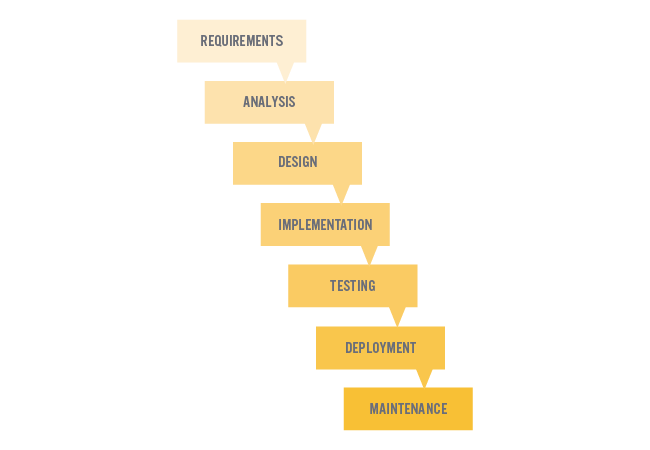
In contrast, Waterfall aims to eliminate risk by outlining all the steps of the project from the beginning. The crux of the methodology is that if you spend more time in the beginning of a project outlining the design and requirements, then the actual project will flow fast and smooth, like a waterfall. Each project phase is 100% completed before moving on to the next.
Pros: Is your project mission-critical? Is it highly complex? Do you need an exceptionally high level of fault tolerance? Waterfall is for you.
Cons: Waterfall can be quite a rigid system, and can lack the flexibility to deal with faced-paced and changeable projects.
Critical Chain / Path (CPM)
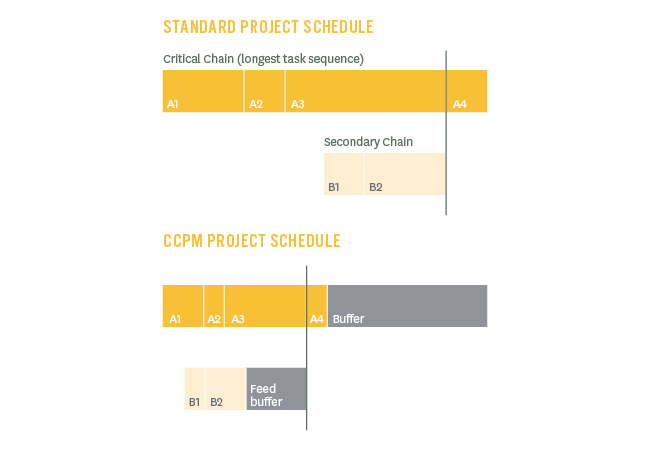
While Waterfall and Agile focus more on schedules and tasks, Critical Chain / Path aims to solve resource issues and is designed for teams where people have flexible skillsets with a lot of crossover. Each project begins by setting out a chain of core elements (the critical chain / path) necessary to complete the project, and then estimate milestones and completion dates based on those elements.
Pros: With resources mapped out, you know exactly who is available for what part of the project, and collaboration on tasks is made easier.
Cons: Because additional time buffers are built into each stage of the plan, Critical Path doesn’t work very well for small-scale projects with a quick-turnaround.
Agile methodologies
Where traditional methodologies place focus on upfront planning, agile methodologies give prominence to teamwork, customer collaboration, and flexibility. Agile methodologies are based on the mindset that software development teams can deliver greater value through iteration and collaboration rather than a predefined process. If you are after adaptive planning for your next project, perhaps one one of these methodologies is for you.
Agile
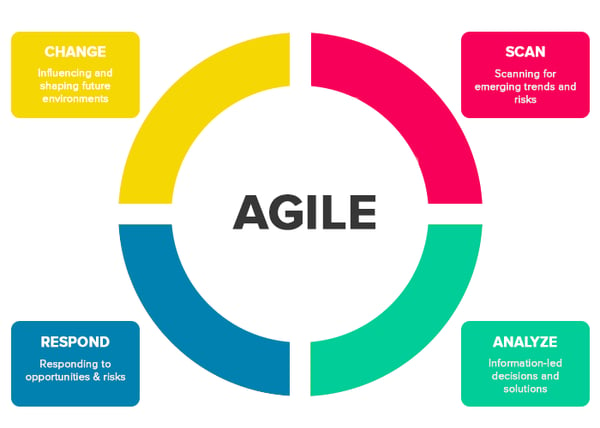
While Waterfall is probably the most widely used and understood project management framework in use today, Agile is fast catching up. Agile was designed with the tech industry in mind, and like its name suggests, it focuses on a speedy turnaround and an ability to adapt to changing parameters throughout the project’s timespan.
The other advantage of Agile is the way it focuses on people and collaboration within the team. Many teams find Agile helps them to both improve productivity while allowing them to boost creativity and create unique solutions.
Pros: Flexible and modifiable goals mean that Agile is a great methodology for creative and software projects, where new ideas and innovations can be quickly adapted into the existing framework.
Cons: Agile is a very hands-on approach, especially for stakeholders and project managers. If you prefer to step back and let the process work for itself, this might not be the methodology for you.
Scrum
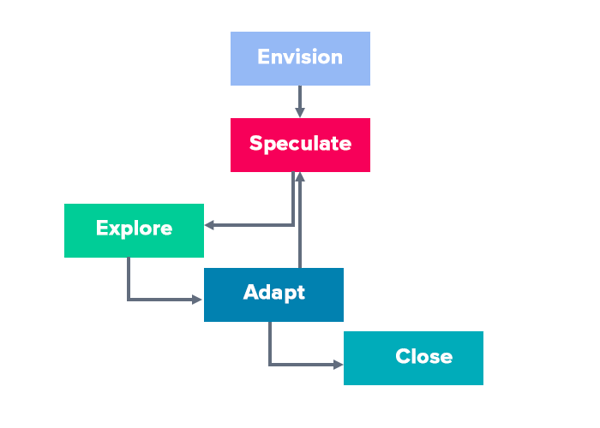
Do you need a methodology that will quickly adapt to shifting requirements? You need Scrum. Named after the rugby play, Scrum focuses on short, sharp delivery of projects - allowing time for rapid feedback and speedy response to changes. There’s a huge focus on tight team dynamics and close collaboration; teams come together to work on a “sprint” - a short period of time. At the end of every Sprint, the team must have produced a usable product.
Pros: Scrum is one of those iterative methodologies developed for the software world - as such, it’s all about productivity and quickly adapting to changing parameters.
Cons: Scope-creep is a huge issue in Scrum projects - they can easily bloat out of control if not reigned in.
Kanban
Kanban is an interesting methodology designed for teams who output a slow and steady stream of deliverables in a continuous workflow.
Pros: With Kanban, you and your team can instantly get an idea of where your time is really being spent. This helps teams improve efficiency.
Cons: Because Kanban is designed for a regular, steady output, major variations in customer demand - Christmas being a great example - can make Kanban fall down.
Extreme Programming
Like its name suggests, Extreme Programming is like productivity on acid - short cycles of development, constant collaboration, and frequent releases keep the project team always on the edge of their seats. XP is designed with software development in mind - as it can be quickly adapted with new ideas and features.
Pros: For a team that demands a high production level, XP can do wonders for productivity. Certain types of people thrive under this environment, which uses collaboration and simple structures to avoid overwork and burnout.
Cons: While some people will enjoy this work environment, others will find it too unstructured and unfocused. Often, the success of a UX team relies not so much on the process itself but on the ingenuity of the individual members of the team.
Hybrid methodologies
It can’t be expected that all methodologies will suit your projects all the time. Perhaps certain aspects on of one work and are complemented by another based on the context and needs of your project. This is where hybrid methodologies come into play. As the name implies, these methodologies are a combination of two or more. By taking the desired attributes of each you can get the best of both worlds.
Change Management methodologies
We know that no matter how much planning we do and how many preventative measure we put in place, there is always going to be something that can stop us in our tracks. Risks are inherent in all projects. Are you a project manager who is hyper-focused on what could pull your project off the rails? By focussing on measures to get your project back under control with the main aim getting your project done, change management methodologies may be for you.
Event Chain
Event Chain Methodology is an interesting technique, because instead of focusing on tasks, it focuses on planning for potential risks. Many project managers feel pressure by stakeholders to create optimistic targets for timelines, budgets and milestones. But these targets can create tension within the team as everyone fights to meet unrealistic deadlines. And the moment something goes wrong, the whole project is doomed.
Event Chain Methodology acknowledges and recognises the risks, and plans for what to do in situations when external events impact the project.
Pros: Event Chain Methodology enables managers to examine the relationship between tasks and external pressures. This creates more realistic projects.
Cons: Sometimes, project managers can get caught up in identifying threats, they can forget that external events can actually be beneficial and present opportunities.
Process based methodologies
New ways of working tend to come about every now and then through the process of trial and error. Once proven, they even start to get some traction. When new and fresh, we often view these as business processes rather than methods, but that doesn’t mean they dont have the potential to grow into them. After all, that's how most of the methodologies above came about. So while these are not strictly “methodologies”, they are definitely worth a mention because you may be able to integrate ideas from these in your own methodology.
Lean
Lean project management is all about empowering the team to produce awesome results and delivering a ton of value while producing little project waste. Project managers who are dealing with tight budgets and other constraints use Lean to drive self-accountability in the team. There’s an emphasis on processes that help to streamline workflow, such as standardisation and work breakdown structure.
Pros: When budgets are low, resources are scarce, and deadlines are short, Lean can help you make the cuts you need while still deliver quality work.
Cons: Lean relies on decisions being made quickly and decisively - and dilly-dallying will corrupt the process.
Six Sigma
Originally developed by Motorola, Six Sigma is a project management framework designed to be driven by data. At its heart it aims to improve quality across a project by reducing defects and bugs. The name refers to the fact that a “Six Sigma” rating indicates that a product is 99.99966% error free. It is another methodology requiring certification.
Pros: Six Sigma doesn’t just take into account one aspect of the process - it looks at everything, and will often suggest improvements before defects even appear.
Cons: Being a data-driven quality-assurance system, Six Sigma can be extremely rigid, which some teams find limit their creativity.
Other Methodologies
PRiSM
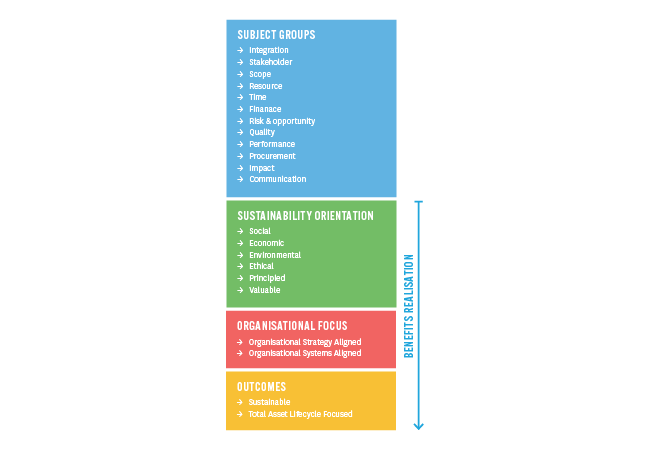 PRiSM stands for Projects integrating Sustainable Methods, and, as the name suggests, it aims to take environmental factors into account. Developed by GPM Global, the PRiSM methodology is used primarily on large-scale construction projects, such as real estate developments, where adverse environmental impacts are a very real danger. PRiSM actually requires project managers to gain accreditation, ensuring the methodology is administered properly and retains its value.
PRiSM stands for Projects integrating Sustainable Methods, and, as the name suggests, it aims to take environmental factors into account. Developed by GPM Global, the PRiSM methodology is used primarily on large-scale construction projects, such as real estate developments, where adverse environmental impacts are a very real danger. PRiSM actually requires project managers to gain accreditation, ensuring the methodology is administered properly and retains its value.
Pros: If your company wants to walk the walk when it comes to sustainability and environmental consciousness, then this is the project management methodology to choose. Show stakeholders that you’re serious about your eco-ideals, and reap the benefits of reduced energy, waste management and distribution costs.
Cons: PRiSM cannot work in isolation. Every level of the company needs to be on board with sustainable principles, or the methodology will fall flat.
Spiral
Named after the spiral pattern the project manager uses to arrange activities, Spiral is a methodology designed for long-term projects. Each loop of the spiral is divided into four phases - analysis, risk evaluation, execution, and planning - and for every phase you undergo multiple review processes and risk assessments. Because of this emphasis on planning and analysis, Spiral works great for high-risk or volatile projects.
Pros: Spiral is great for mission-critical projects requiring a high level of risk analysis and control.
Cons: The risk analysis element of Spiral requires specific expertise, which may only be available through additional training. Spiral can be a more costly model and is not ideal for smaller projects.
PRINCE2
PRINCE2 (Projects IN Controlled Environments) isn’t just a methodology for managing projects, it’s actually a de facto standard used by the UK government since 1996 (which might explain its royal title). This means that PRINCE2 is quite widely recognised throughout the UK. PRINCE2 is quite process oriented; Projects are divided into stages, and each stage has its own plan and process to follow, and is heavily documented.
A project manager requires a thorough knowledge of this complex methodology to understand if it will scale properly for a particular project, but luckily PRINCE2 requires accreditation in order to become a facilitator.
Pros: In large corporate entities, the extensive documentation required for PRINCE2 helps with performance appraisals and corporate planning, as well as mitigating against certain risks.
Cons: When something changes in a PRINCE2 project, it can take some time for the team to adapt, as the process is quite cumbersome with lots of documentation to be amended.
How to Choose the right methodology for your project
As we can see from above, each methodology has their own pros and cons and all are suited for different projects. So how do you pick? Here a few things to keep in mind:
1. Evaluate the project
When selecting a methodology, it is often helpful to start with the end in mind. What does your final deliverable look like and what do you need to get it done? Start by determining your initial requirements. If your requirements suggest you need a large team, pick a methodology that allows flexibility.
Similarly, if you know what your end result looks like, you can utilise a more structured methodology like Waterfall. Is you end result vague? Pick and alternative like Agile. Some other things to consider in your project evaluation are:
- Project budget
- Timeline
- Size and complexity
- Stakeholder expectations
- Project type and industry
2. Evaluate your team
The methodology you select will effectively act as the blueprint for your project, guiding your team on what to do and when to do it. However, for this to occur your team needs to be able to read and understand it. If your team isn’t familiar with the project management methodology you select, then you will struggle to get results and waste time and resources teaching the methodology.
You should also consider your teams composition. What are its strengths and weaknesses? Does it thrive on collaboration, consider using a less structured approach like Agile. Is your team highly motivated and disciplined? A SCRUM approach can work well. Some other things to consider in evaluating your team include:
- Experience
- Training
- Self-organisation capabilities
- Preparedness
- Location
Essentially, select a methodology that complements your team, don’t force your team to fit a methodology.
3. Evaluate your organisation
How your company is organized, its culture and its past records will have a big impact on your choice of project management methodology. As we have seen above, some methodologies will only work in organisations where established hierarchies exist, where as other are only suitable to smaller outfits.
Consider your organization's history. Has a certain method been implemented in the past but only ever delivered poor results? You will feel comfortable excluding this from your selection. Some other things to consider when evaluating your organisation include:
- History and experience with different methodologies
- Culture
- Hierarchy
- Flexibility
- Maturity
- Size
- Resources
- Industry
4. Evaluate your stakeholders
Stakeholders are incredibly important to a project in terms of its success, so keeping their requirements in mind when selecting a methodology is always a good idea. When choosing a project management methodology, consider:
- Stakeholder involvement - some methodologies demand a regular involvement from stakeholders. For example, Agile requires regular availability for feedback. If your stakeholders are busy, best pick a methodology that requires less involvement.
- Stakeholder requirements - Do you know how your stakeholders work? What do they require from you? If you know your stakeholders are known to change their mind, pick a fluid methodology. Are they fond of daily updates? Consider a methodology that will give them this.
5. Evaluate your tools
Some project management tools, only work well with specific methodologies. Hence, consider what tools and software you already have access to, and how good you are with it, this will impact your choice.
To do this:
- Make a list of all software tools you currently use
- List their limitations and capabilities
- Compare their capabilities against the requirement for a specific methodology
Ideally, the methodology you chose should work with what you already have. If you leaning towards a method that requires new tools, consider that in addition to the cost, you will also lose time retraining you team.
To Sum it up
Some project management tools, only work well with specific methodologies. Hence, consider what tools and software you already have access to, and how good you are with it, this will impact your choice.
To do this:
- Make a list of all software tools you currently use
- List their limitations and capabilities
- Compare their capabilities against the requirement for a specific methodology
Ideally, the methodology you chose should work with what you already have. If you leaning towards a method that requires new tools, consider that in addition to the cost, you will also lose time retraining you team.










